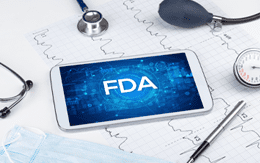A well-run and optimized Speaker’s Bureau is one of the most effective tools a biopharma brand can employ to drive awareness and educate Healthcare Practitioners (HCPs) on emerging drugs and treatments. There’s no substitute for clinicians who have first-hand experience with a product and can walk through the science and data with their peers. When sharing their scientific expertise in a given therapeutic area, they have the potential to be the best possible guides for fellow HCPs who have little to no experience with new products or indications. Peer-to-peer education works because it employs adult learning principles.
Key Opinion Leaders are referred to as such because they carry significant influence in their given therapeutic area and work with peers from a managed care perspective. This includes leadership roles in developing guidelines, treatment protocols, and disease state treatments.
When KOLs are involved in speaker programs, they’re highly influential. They give HCPs access to their knowledge and expertise of the product, because they have direct, hands-on experience with it and are intimately familiar with the clinical trial data. KOLs are often members of key associations, most likely with leadership positions within their therapeutic area. In addition, many of these opinion leaders actively participate on, advisory boards and in studies and publications.
By comparison, speakers will often leverage more personal, hands-on experience with their patients than their KOL counterparts. This clinical experience is very helpful when presenting to treating HCPs. In general, speakers have more experience in executing brand-driven promotional and disease state programs based on their clinical experience with patients.
Now, let’s look at the key considerations while building and strengthening your speaker’s bureau.
1. Identify and Recruit the Right Speakers and KOLs

Building a brand-new bureau grants you the unique advantage of being able to establish relationships with different speakers. An organization might consider building a new speaker’s bureau for a product launch, which always comes with excitement and anticipation. Introducing new faces into your organization – also brings fresh perspectives and insights to the surface. At this point in the process, the important question to ask is “how many speakers and/or KOLs do we need?” That answer depends on a few factors such as your peer-to-peer budget, how many speakers your brand can realistically keep active, and how much benefit they bring to your organization.
More is not always better. Two hundred speakers may be a large bureau for some brands, but are the speakers effectively delivering the content and keeping busy with speaker talks? Most compliance departments require a minimum number of speaking engagements per speaker in a given year. If your planned events calendar cannot support that minimum for all speakers in your bureau, advocating for inclusion of speakers not meeting that requirement could become problematic. With the Office of Inspector General’s (OIG) recent fraud alert on speaker programs, providing justification on every speaker in a bureau has taken center stage.
Identifying the right speakers and Key Opinion Leaders (KOLs) for your brand is not always easy. When finding the best advocates to represent your brand and deliver your message with impact, it’s important to recognize that there is a notable difference between speakers and KOLs. It’s the words “opinion” and “leader” that are really important to keep in mind.
Once you have considered the requirements of your speaker’s bureau, it’s time to identify the individuals who fit your needs. For example, if your product has received approval for a new indication, you may be looking for a KOL capable of explaining the science behind it. In that example, the feedback from your clinical and R&D team is going to play a heavier role. On the other hand, if the information being presented is more community-based, your field sales and medical affairs teams may be a better fit to determine who would be most appropriate to deliver that message.
Sometimes the perfect fit is a KOL your team isn’t aware of, someone your brand has no pre-existing relationship with. To mitigate this, many brands reach out to a trusted partner for KOL Identification and Mapping services. The partner develops a customized and targeted list that your internal team can evaluate and fine tune to make sure the speakers and KOLs selected result in a dynamic and equitable speaker’s bureau.
2. Build or Refine Your Bureau
In essence, there are two ways to craft a speaker’s bureau. You can build a new one from scratch or refine an existing bureau to meet your brand’s needs. The kind of speaker’s bureau that will be most effective for your organization depends on several different factors. From the start, it’s important to work with your compliance department to ensure your strategies and tactics are aligned with your organization’s policies and guidelines.
Having too many or underutilized speakers can lead to compliance challenges, reduced cost efficiency, and frustration for everyone from the brand manager down to the speakers themselves. Evaluating your bureau regularly, taking a careful look at which speakers and KOLs are effective and who may need to be removed or replaced can ensure that your bureau is right-sized and easily justified.
When working with an existing bureau, the same questions of budget, size, and speaker effectiveness still need to be asked. Consider having an ROI analysis done to examine your existing list of speakers. You may find a large majority of your speakers are not providing much benefit to the brand. Reducing your speaker’s bureau by a considerable amount may appear to create a less impactful bureau. Doing so allows for a more efficient and effective plan to utilize the speakers who have proven their value.
3. Make Training Convenient and Accessible
Once you have established your bureau, having a top-tier educational training program will take it to the next level. The primary speaker training strategies to consider are traditional Live In-Person Training, Virtual Live Training, and On-Demand Training. Choosing the right strategy or combination of two or more can be critical to your bureau’s success.
When looking at your budget, On-Demand Training is the most cost effective. Virtual Live Training lands in the middle, and Live In-Person Training is the most expensive. But which of these three will ultimately be the most budget-friendly and provide the best outcome for your speaker’s bureau?
When utilized properly, all three can be effective. These will all likely be used at some point in the speaker training process. Live In-Person Training is ideal for establishing a brand-new speaker’s bureau or maintaining an active, existing one. Face-to-face interaction allows your speakers to strengthen peer networks, develop camaraderie, and share valuable insights within the bureau over the course of a few days.
Companies will often rely on Virtual Live Training throughout the year when Live In-Person Training isn’t a feasible option. It‘s an ideal option because it allows speakers to engage in a real-time, convenient, and budget friendly setting.

Like Virtual Live Training, On-Demand Training is convenient and easily accessible. Its biggest benefit allows speakers the flexibility of completing training on their own time. On-Demand Training is the least expensive training option. It has the added benefit of providing detailed tracking metrics on each speaker’s participation, knowledge checks, compliance, and attestations.
For a complete breakdown on the benefits of the different types of speaker training, download our White Paper: The Evolution of Biopharmaceutical Speaker Training – Identifying the Best Training Options for Your Speaker’s Bureau.
Your speaker training program may be well-planned and include one of these strategies, but the training alone cannot sustain an effective speaker’s bureau. Establishing a complementary strategy for disseminating new information, sharing effective communications, and nurturing speaker engagement and participation are key components to guaranteeing your bureau’s success.
In conclusion, there is no “one-size-fits-all” formula for strengthening your speaker’s bureau. Each brand is unique and has specific needs to be met in order to maximize their bureau’s effectiveness. This ultimately lead to improved speaker programs and better patient care. By implementing the tips and information outlined in this article, you will be well on your way to a strengthening your speaker’s bureau that is beneficial, successful, and effective for years to come.




